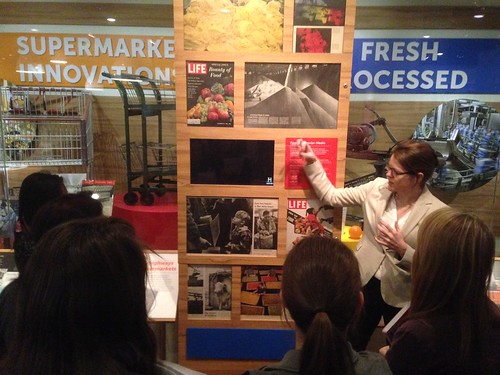Class Report
Food and Culture at the Museum

Teacher: Cory Bernat (far right), food historian, curator, and researcher for the National Museum of American History’s “FOOD: Transforming the American Table, 1950-2000.”
Facilitator: Lexie DeGrandchamp
What was the weirdest thing you learned? “Baby carrots” did not take off as a food concept until someone invented a device that could peel carrots, which took longer than you’d think. Until that device, the carrots were peeled by hand, and thus, not mass-produced.
What did you learn that you can put into practice immediately? Slightly off topic, but I learned how difficult it is for a national institution like the Smithsonian to challenge its audience with information. It was interesting to learn what was originally part of the exhibition but edited out due to the need to self-censor their work. I feel like I now have a more nuanced understanding of what goes into exhibition design at large museums, and I can question what I think is missing from exhibits and have a more fulfilling museum experience, rather than just passively absorbing the information presented.
Anything else fun you’d like to tell future students of this class? Walking through an exhibition with a museum curator is a great way to become a participant, rather than an observer, in the museum. Every artifact has a story. In this particular exhibition, we saw the curator’s mother’s Corningware casserole dish and learned that there are, in fact, collectors for everything, even plastic lids for to-go cups.
